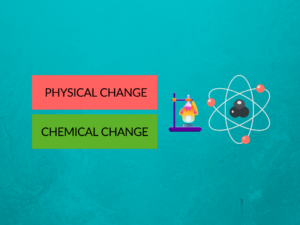Physical and Chemical Changes Class 9: Understanding the Differences
Have you ever wondered why some changes are reversible while others are not? This article delves into the realm of physical and chemical changes, two fundamental concepts in the world of science. By exploring their definitions, examples, and applications, we will gain a clear understanding of how they differ from each other.
What are Physical Changes?
Physical changes involve alterations that do not result in the formation of new substances. They are usually reversible and only affect the physical properties of a substance, such as its shape, size, or state of matter. During a physical change, the molecules remain the same.
Examples of Physical Changes:
– Melting ice cubes
– Boiling water
– Breaking a glass
– Dissolving salt in water
– Cutting paper
– Grinding coffee beans
Uses of Physical Changes:
– Freezing fruits and vegetables to preserve their freshness and nutritional value
– Heating metals to change their shape during manufacturing processes
– Grinding ingredients to enhance their texture in cooking
– Dissolving medication in water to aid absorption in the body
What are Chemical Changes?
Chemical changes, also known as chemical reactions, involve the transformation of one or more substances into different substances with new properties. These changes are typically irreversible and often involve a change in color, release of gas, or formation of precipitates. During a chemical change, the molecules rearrange and bond differently.
Examples of Chemical Changes:
– Burning wood
– Rusting of iron
– Cooking an egg
– Digesting food in our bodies
– Photosynthesis in plants
– Rotting of fruits and vegetables
Uses of Chemical Changes:
– Generating energy through combustion processes
– Creating new materials with specific properties through synthesis reactions
– Breaking down complex molecules in biological processes
– Producing food and beverages through fermentation reactions
Differences between Physical and Chemical Changes Class 9:
| Difference Area | Physical Change Class 9 | Chemical Change Class 9 |
|---|---|---|
| The formation of new substances | No formation of new substances | Formation of new substances |
| Reversibility | Reversible | Irreversible |
| Physical properties | Affected | May be affected |
| Chemical properties | Not affected | Affected |
| Energy change | No significant energy change | Energy change may occur |
| Change in mass | No change in mass | Change in mass may occur |
| Reaction rate | Not applicable | Reaction rate is important |
| Visible clues | No obvious visible clues | Color change, gas production, etc. |
| Particle rearrangement | No rearrangement | Rearrangement of particles |
| Examples | Melting ice, boiling water | Burning wood, rusting of iron |
Conclusion:
In summary, physical changes involve alterations in the physical properties of a substance without resulting in the formation of new substances. These changes are reversible and do not involve any significant energy change or affect the chemical properties of the substance. On the other hand, chemical changes lead to the formation of new substances with different properties. These changes are irreversible, often accompanied by an energy change, and can modify both the physical and chemical properties of the substances involved.
People Also Ask:
Q: What is the main difference between physical and chemical changes?
A: The main difference lies in the formation of new substances. Physical changes do not create new substances, while chemical changes do.
Q: Can physical and chemical changes occur simultaneously?
A: Yes, it is possible for physical and chemical changes to occur simultaneously in some cases, resulting in complex reactions.
Q: Are all physical changes reversible?
A: In most cases, physical changes are reversible. However, some physical changes may not be easily reversible depending on the circumstances.
Q: How can we identify a chemical change?
A: A chemical change is often accompanied by observable clues such as changes in color, the production of gas, the formation of a precipitate, or the release or absorption of energy.
Q: Can physical and chemical changes be useful in our daily lives?
A: Yes, both physical and chemical changes have various applications in our daily lives. Physical changes are employed in processes like freezing, heating, and grinding, while chemical changes are involved in combustion, food preparation, and the creation of new materials.



